Story by Brandes Elitch
Photos courtesy the Mullin Automotive Museum
About six months ago I got a call from an old friend who is part of a members-only group at the Petersen Automotive Museum in Los Angeles. Knowing that I have a Citroën DS and an SM, he announced that his group had a special invitation to attend the opening of a new exhibit at the Mullin Automotive Museum in Oxnard, devoted entirely to the history of Citroën. It didn’t take me long to decide to make the trip, although it is a full day’s drive for me from Sonoma County, 2 hours north of San Francisco. He enticed me further by saying we would drive up there from L.A. in his 1962 Maserati 3500 coupe, which is a pretty brave undertaking considering the traffic there.
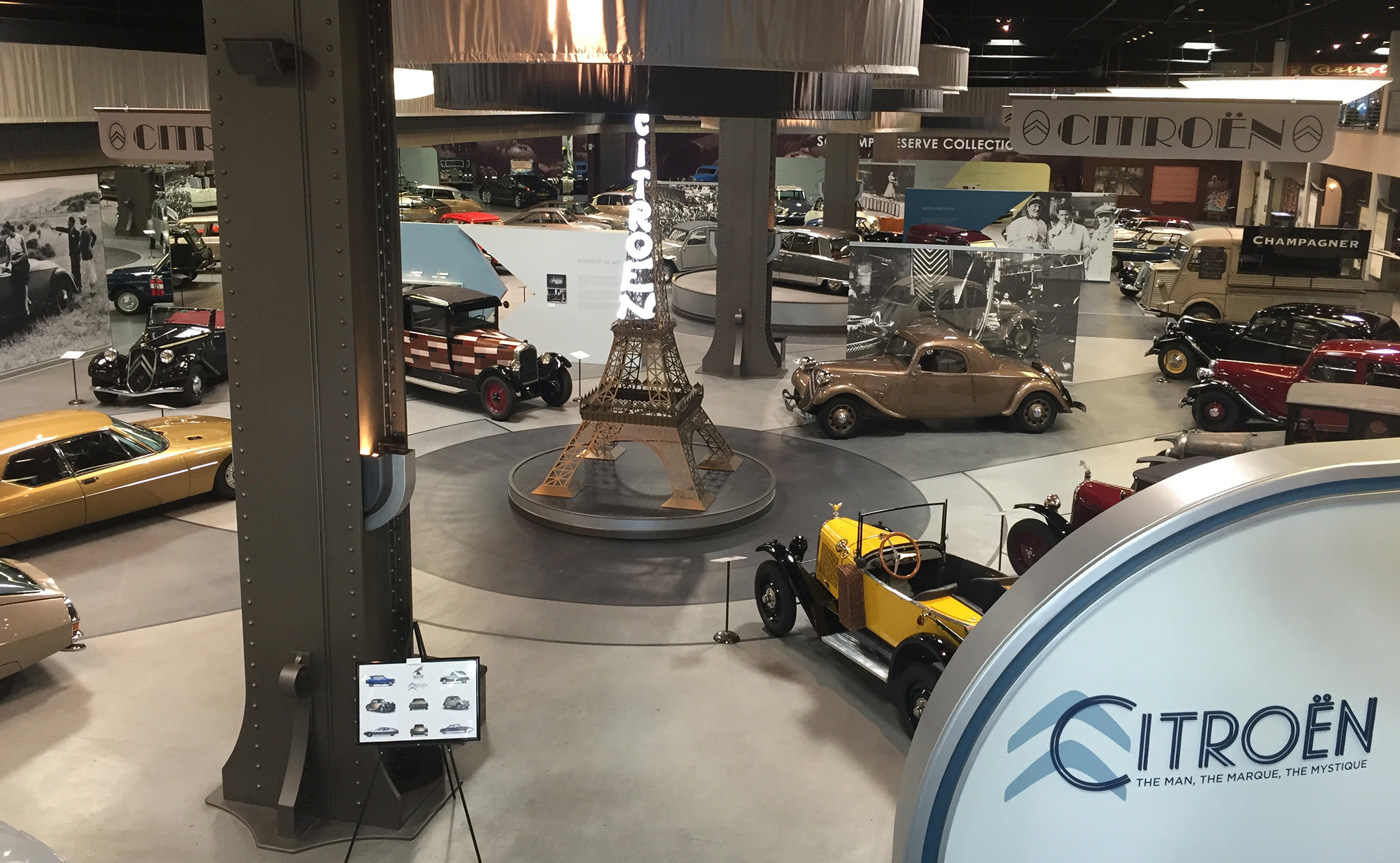
A portion of the main floor of the Mullin – all the grandes routieres have been replaced by Citroens!
The Mullin opened in April, 2010, and shortly thereafter I was able to attend a private invitation for the members of the Classic Car Club of America, so I had some familiarity with it and its predecessor, the Otis Chandler Museum. There is a lot of history here, so let’s start at the beginning.
Otis Chandler was a larger than life figure who published the Los Angeles Times from 1960 to 1980, and turned a provincial newspaper into a prestigious national one. He had a 45k square foot building purpose built in Oxnard as a museum for cars, motorcycles, fine art, wildlife and game, and even an 1894 Baldwin steam locomotive. He founded the museum in 1987. When he died in 2006, everything was auctioned off (42 motorcycles and 48 cars) setting at that time a record for a single day sale of one collection: $36 million.
Peter Mullin is a philanthropist who has given so much of his time and money to so many charities and foundations and universities that space limitations preclude me mentioning them all, except for a couple that will be of particular interest to our readers here. In 2013 he donated $15 million to fund a building on the south campus of the world-famous Art Center College of Design in Pasadena. He has also played a leading role as Board Chairman of Petersen Museum in the 2015 $125 million renovation of the Petersen, including a real-time studio staffed by Art Center students! The Petersen was founded in 1994 by the owners of Petersen Publications (Motor Trend, Hot Rod, etc.) as a gift to the City of Los Angeles. Financial management ineptitude by the city caused the Petersens to subsequently donate another $100 million in 2011 to stabilize it financially!
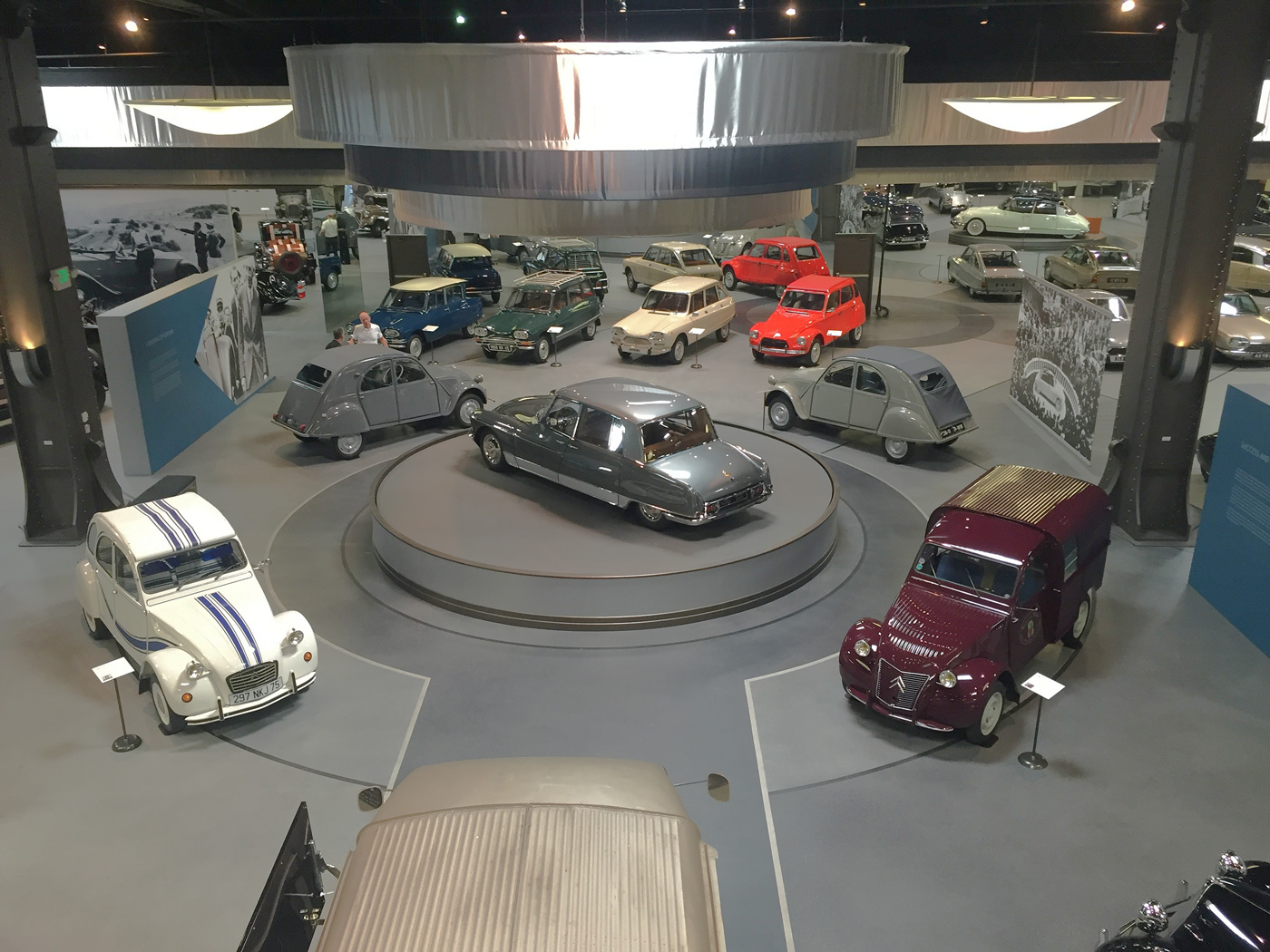
An overview of some of the 2CV and Ami models on display, with an extraordinary Chapron bodied DS sedan on the display stand.
Mullin is also President of the American Bugatti Club (he acquired a dozen cars from the Schlumpf collection in Mulhouse, which is a pretty good start). When I saw the collection the first time, it was focused on Bugattis of course, and also other French grandes routieres of the 1920’s and 1930’s, including as you would expect Delahaye, Delage, Voisin, Talbot Lago, and Hispano. Most surprising was the collection of 50-75 pieces of furniture by Carlo Bugatti , and sculpture by Rembrandt Bugatti, and even some of the personal art collection owned by Ettore and Jean Bugatti. At that time, about 50 or 60 cars were displayed on two floors, about half the collection, I believe. Mullin’s favorite is apparently a Talbot Lago “goutte d’eau” coupe, but to me the most astonishing was the 1937 Delahaye Type 145 V-12 GP car, famous as the “Million Franc Car.”
Mullin has stated in various interviews over the years that he considers French cars of the twenties and thirties to be the apex of sculpture, design, engineering, and performance. He collects all types of art from the Art Deco period, including cars, and says that “I don’t think it ever got any better than that.” I’m sure that many of our readers would agree with that, and why not? Mullin has also stated that he believes that Oxnard is one of the last undiscovered beach cities on the scenic drive up the Pacific Coast Highway to Santa Barbara and that is one of the reasons he acquired the museum building. Oxnard is sixty miles west of downtown L.A., and while it is one of the wealthiest areas in the country, it is one of the nation’s leading strawberry producers, and fields of strawberries are adjacent to the museum.
Although I have attended the 50th anniversary of the DS in Paris and seen the Citroën company private collection, as well as numerous French museums, I must say I was astonished at the depth and breadth and quality of this exhibition. All the grandes routieres have been temporarily banished from the main floor. There are fully 46 cars on display, from the earliest 1919 Type A, to the 5 cv, Traction Avant, DS, SM, 2 cv, up to a 2007 C6 and a 2009 Pluriel. There is a very well curated and comprehensive display of artwork and advertising materials that Citroën is famous for. I feel confident in stating that there will not likely be a more comprehensive display of Citroën history in the U.S. for many years, if ever, so if you are a Citroëniste, attendance is required.
Upon arrival at the museum, which is located in an industrial complex just west of the freeway, we were greeted in the parking lot by Tessa Crane, who is one of the docents. She mentioned that I might know her father who is pretty well known in automotive circles. He turned out to be Larry Crane, and by a stroke of luck, he turned out to be our guide for the tour. Larry was editor of Auto Afficianado magazine, and before that, had a long history in automotive publishing, including tours at Road & Track, Motor Trend, Automobile Magazine, and Vintage Racer. He wrote a series of columns published right here in VeloceToday called “A Car Life, With Larry Crane,” that you will want to read. (Pete, you should ask Larry to write more columns!). Larry was particularly helpful in explaining the furniture and artwork in the Mullin collection, which is worthy of a visit itself.
Now for those of you who are not familiar with the history of the marque, where to begin? I doubt if another marque would have such a glorious history of consistent technical innovation for such a long period of time, except for Lancia perhaps. It would take many columns to properly explain this, so here is some background material.
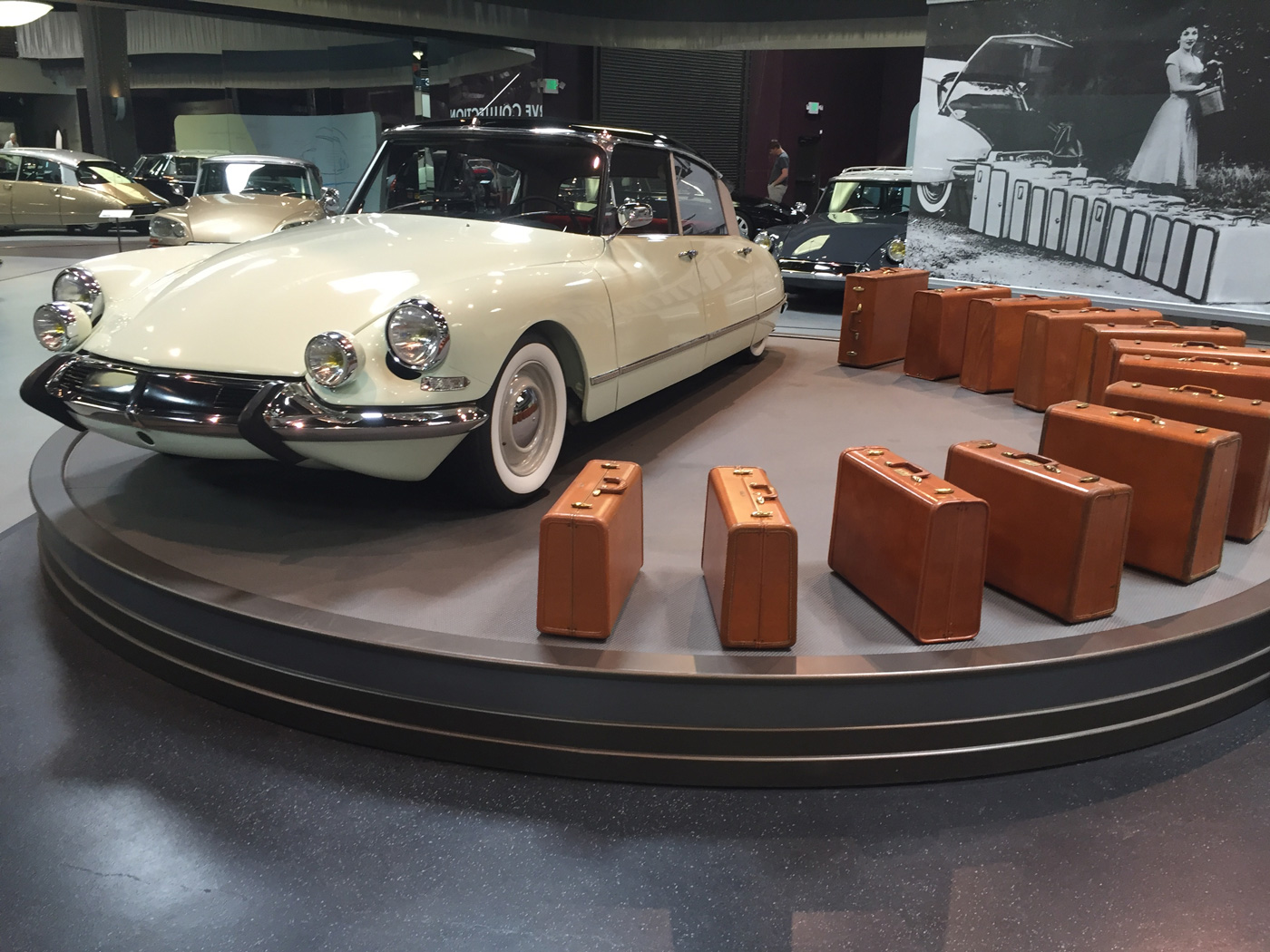
A real life copy of the famous period ad with Gina Lollobrigida with all the suitcases which will fit in the DS!
Most Americans, if they had any familiarity at all, would recognize a DS, although the last one was sold here in 1972. In 2005, it was voted “the most beautiful car ever built” by a panel of world-renowned designers including Giorgetto Giugiaro and Paul Braq. In 1999, the Global Automotive Elections Foundation ranked the DS as the third most influential automobile design in history, and it was also ranked by the British magazine Classic and Sportscar as the most beautiful car of all time. French writer Roland Barthes called it, upon its debut in 1955, “a new Nautilus.” Many of the themes of the DS were carried over to the SM, a 140 m.p.h. rocket ship powered by a 4-cam Maserati V6 with 3 two barrel Webers, and the subsequent CX.
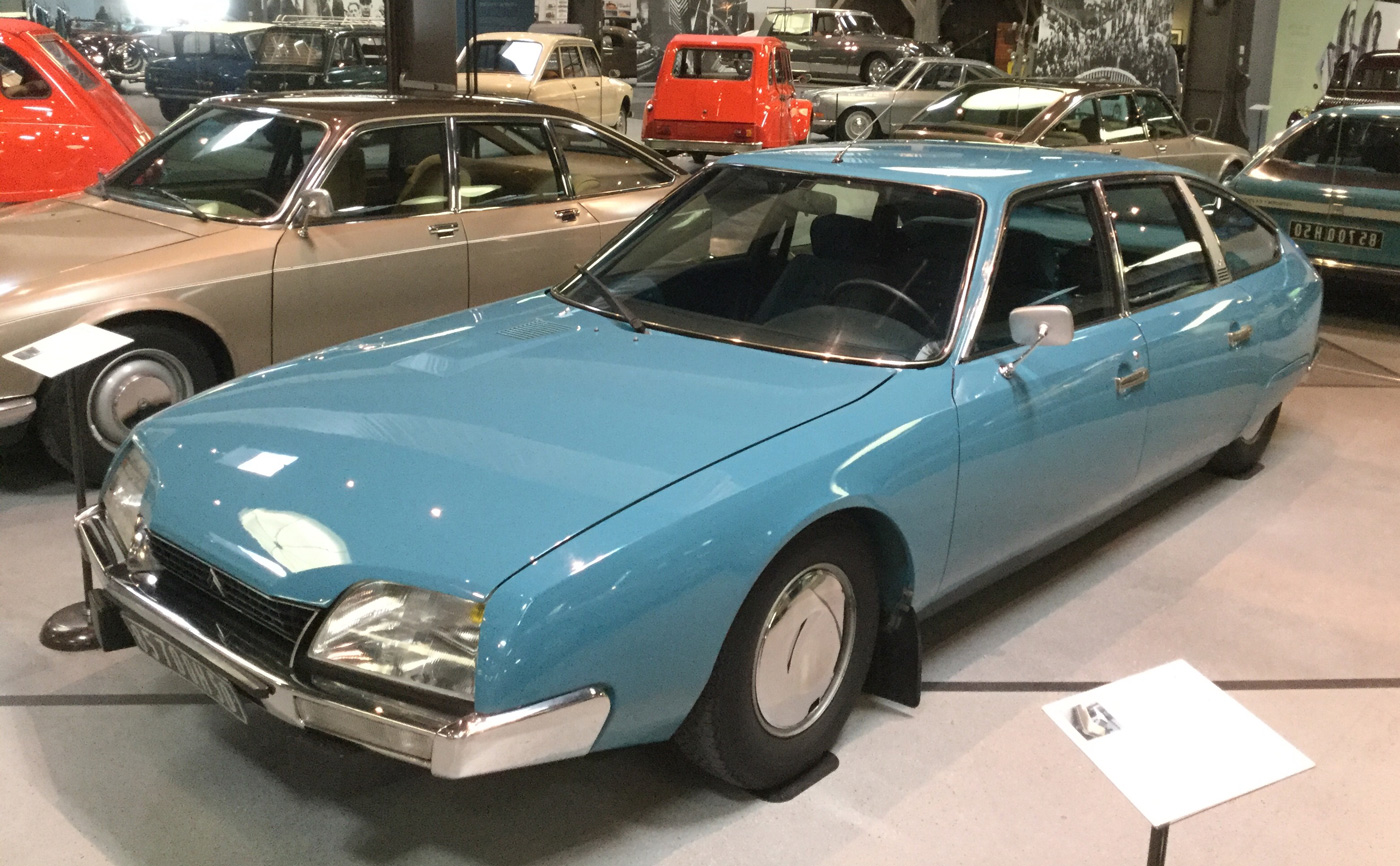
A CX, the successor to the DS, and a GS Birotor with Wankel motor that survived the factory effort to buy back and destroy the entire production.
The firm was started by Andre Citroën in 1919, after illustrious wartime service. Always a big admirer of the U.S., he quickly adopted modern American methods for large-scale, high-volume industrial production, coupled with a brilliant approach to publicity, advertising, and mass merchandising to create a brand with strong consumer appeal. He manufactured highly detailed model cars so that a French baby’s first three words would be, “Maman, Papa, Citroën.” By the early 1930’s, he was the fourth largest manufacturer in the world. The great Gabriel Voisin called him “that astonishing man.” Citroën, “the Jew of Javel,” as the malevolent Louis Renault called him, surrounded himself with three great figures: Voisin, Lefebvre, and Boulanger, who were not just talented engineers but also knowledgeable about art and architecture, which was imparted into the company’s DNA from the beginning. It became the home of exotic engineering and advanced aerodynamics
Citroën died much too early but by his death he had begun production of the Traction Avant, and the firm was subsequently well managed by the Michelin family for decades until its eventual merger with Peugeot following the Arab oil crisis. Today, the French say that Citroën is “the most famous unknown man of our century.” Although the factory records were destroyed entirely during 1939-45, an enormous amount of material has been created subsequently and there is much readily available reference material for you to study if you are so inclined. In the meantime, the Mullin display is open through April, which gives you a few months to get down there to see it in person. If you are seriously interested in automotive design, this might be considered a pilgrimage, particularly if Larry Crane is your host.
The website, www.mullinautomotivemuseum.com lists tickets available for semi-private tours on Tuesday and Thursday, which appear to be limited to 100 tickets for the day, and for the second and fourth Saturdays, where there appear to be 225 tickets available. It might be best to call first (805.385.5400). The Citroën Exhibit open through Spring of 2018.
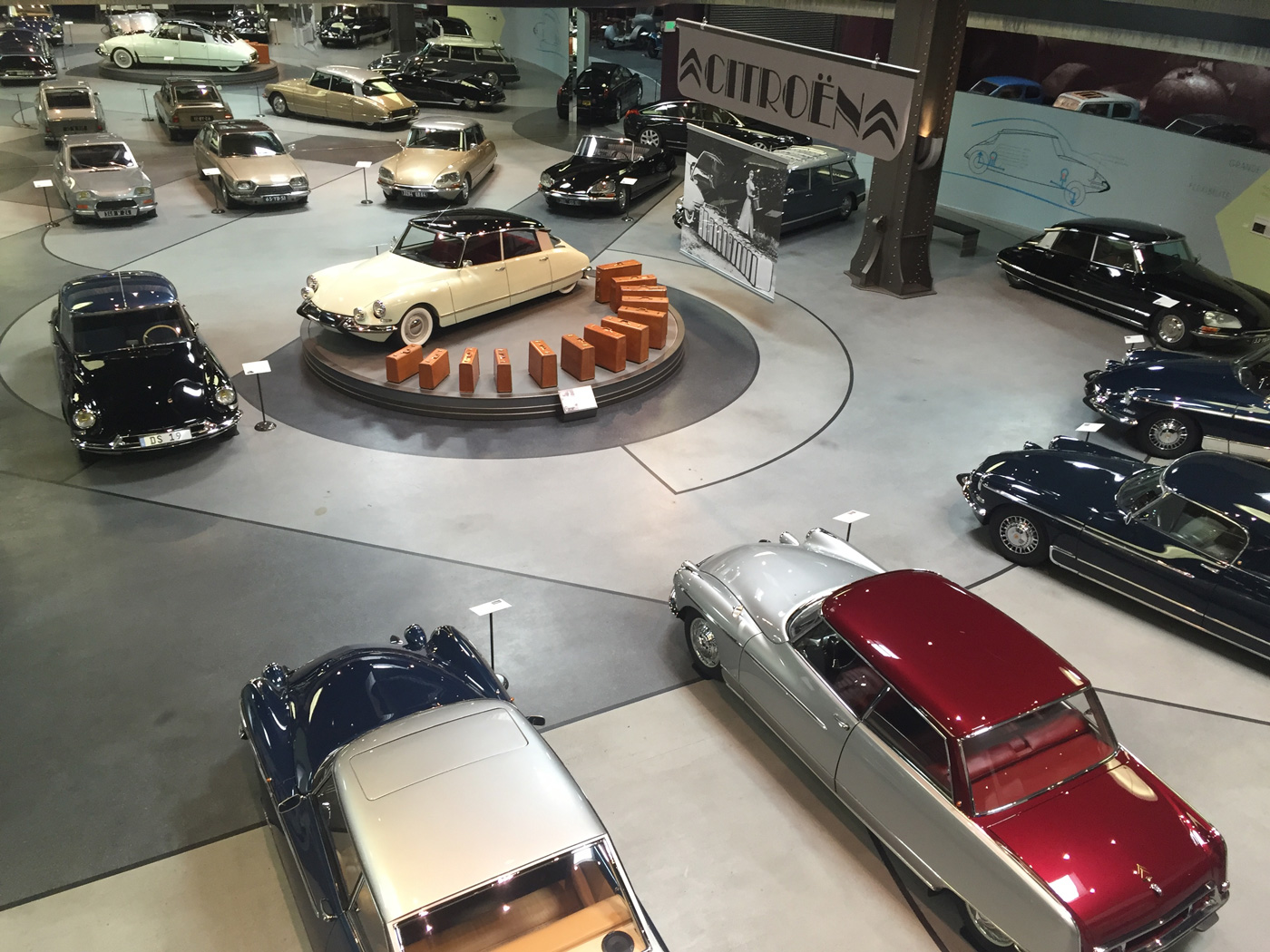
A comprehensive display of the DS, including a few Chapron bodied coupes. Chapron built DS variants from 1958-74. He died in 1978. Chapron made 389 DS convertibles and also coupes and sedans. The factory made 1365 convertibles of their own.
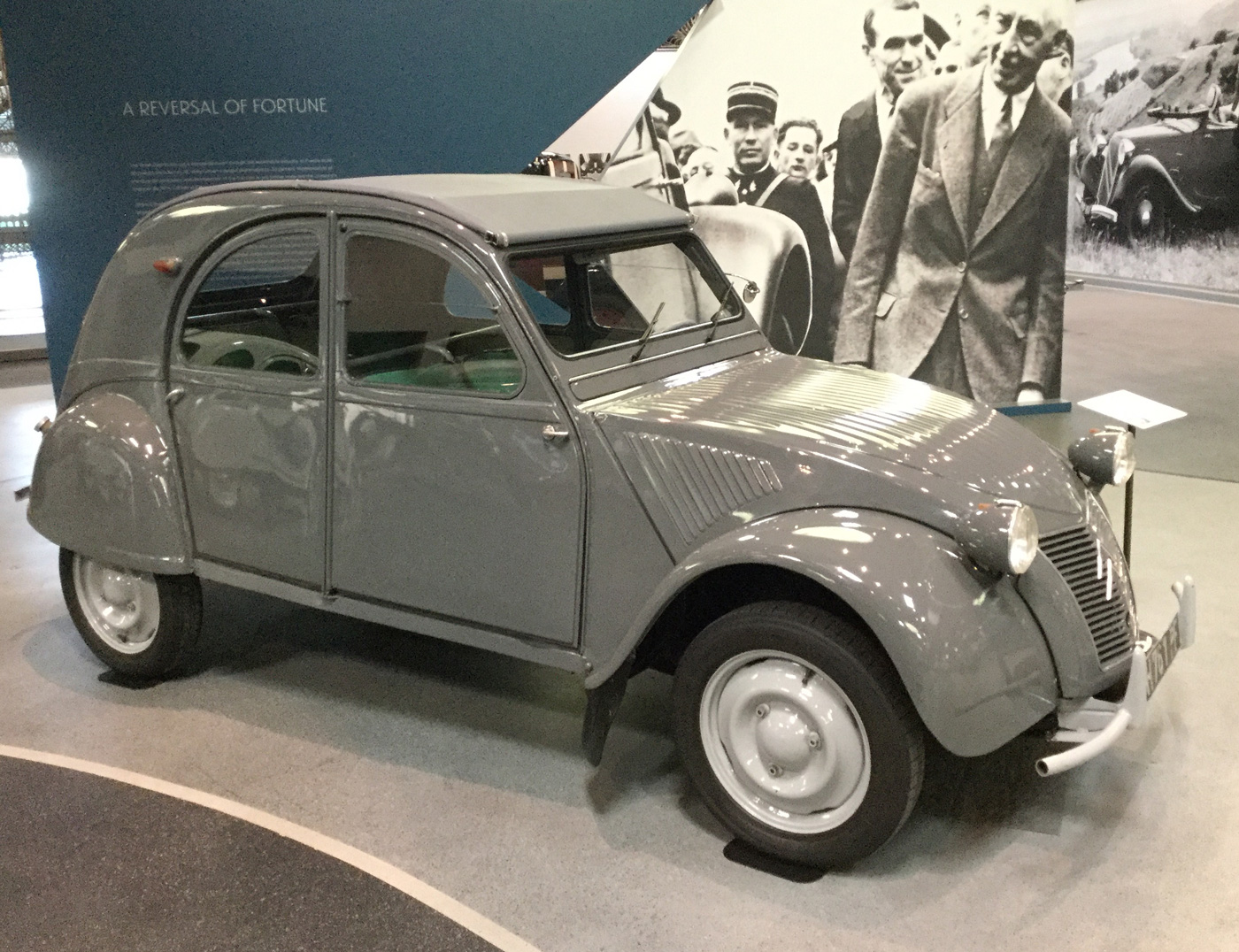
A 2 CV, aka the tin snail, in production from 1948-1990, with 3.8 million produced, and an additional 1.2 million 2 CV vans.
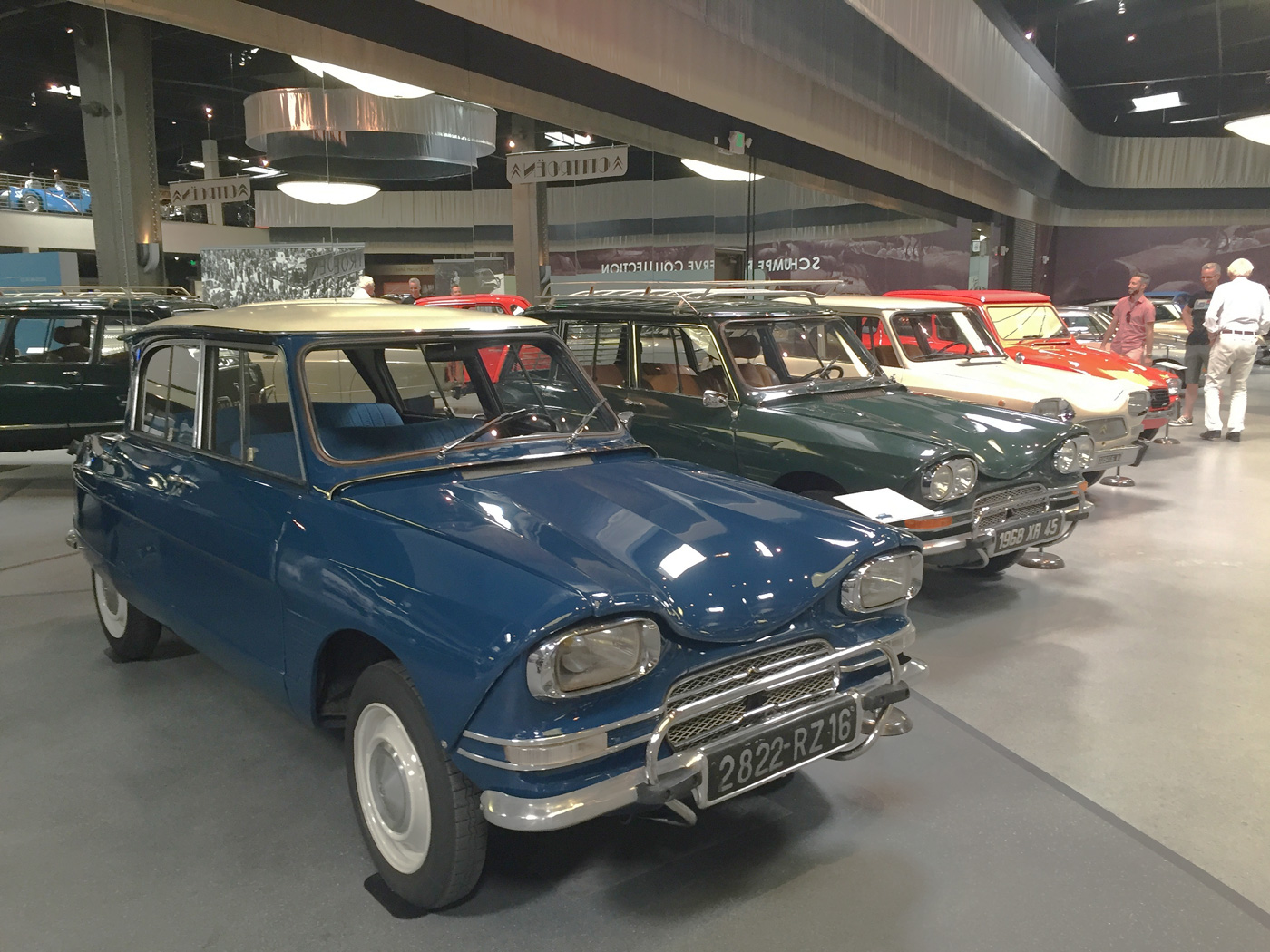
A lineup of the Ami models, basically a 2 CV drivetrain with a more conventional body, if you could call it that – 1.8 million Amis were produced along with 1.4 million Dyanes.
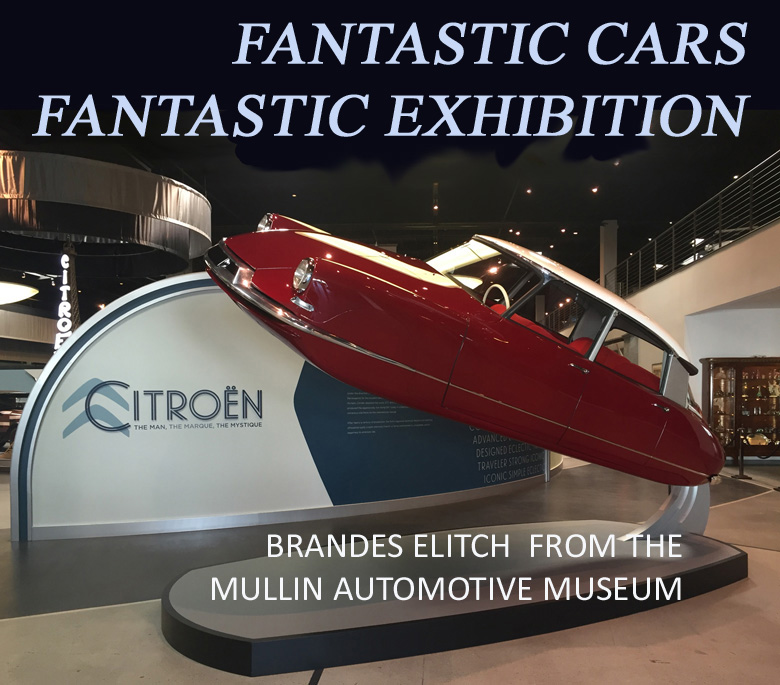
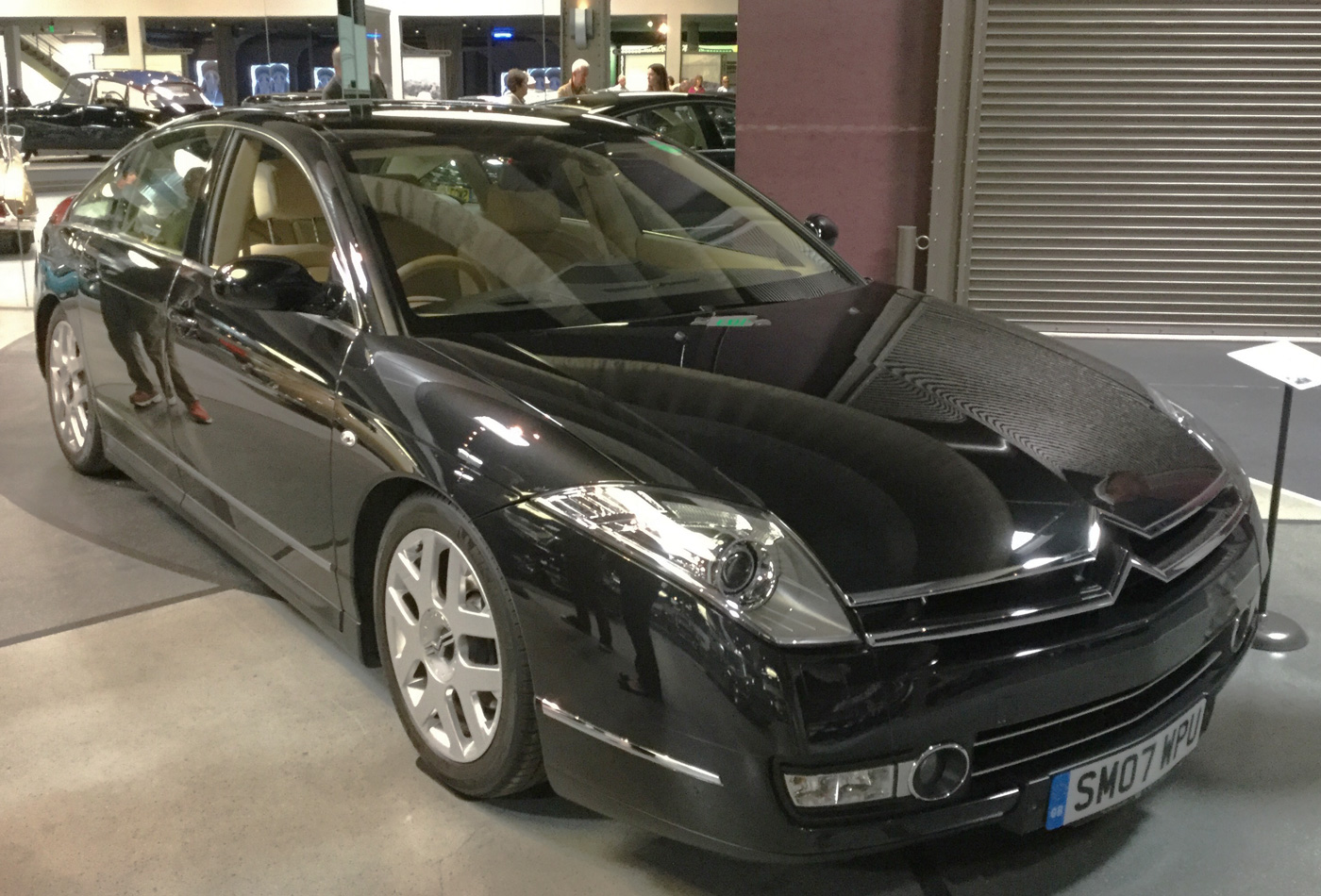
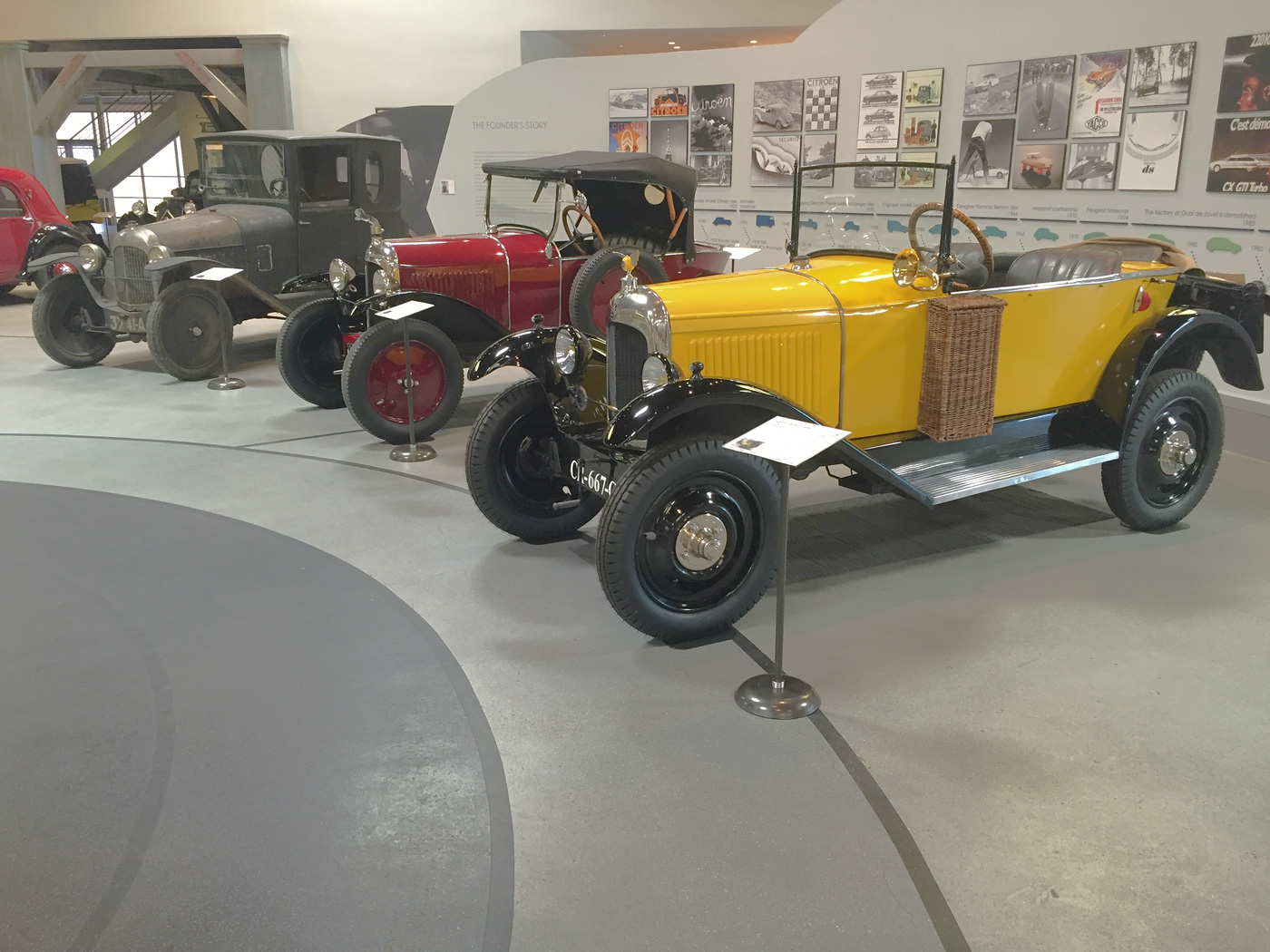
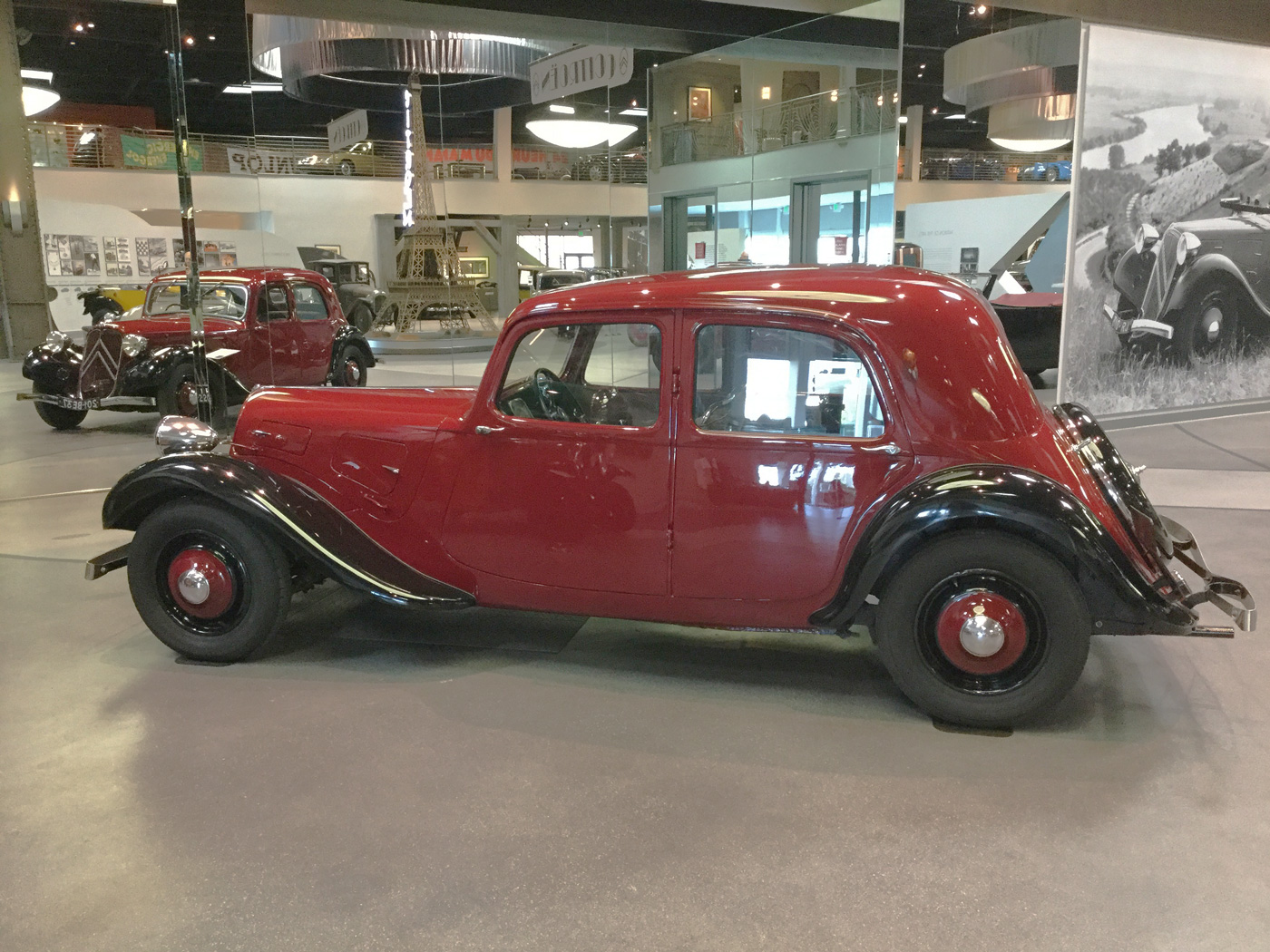
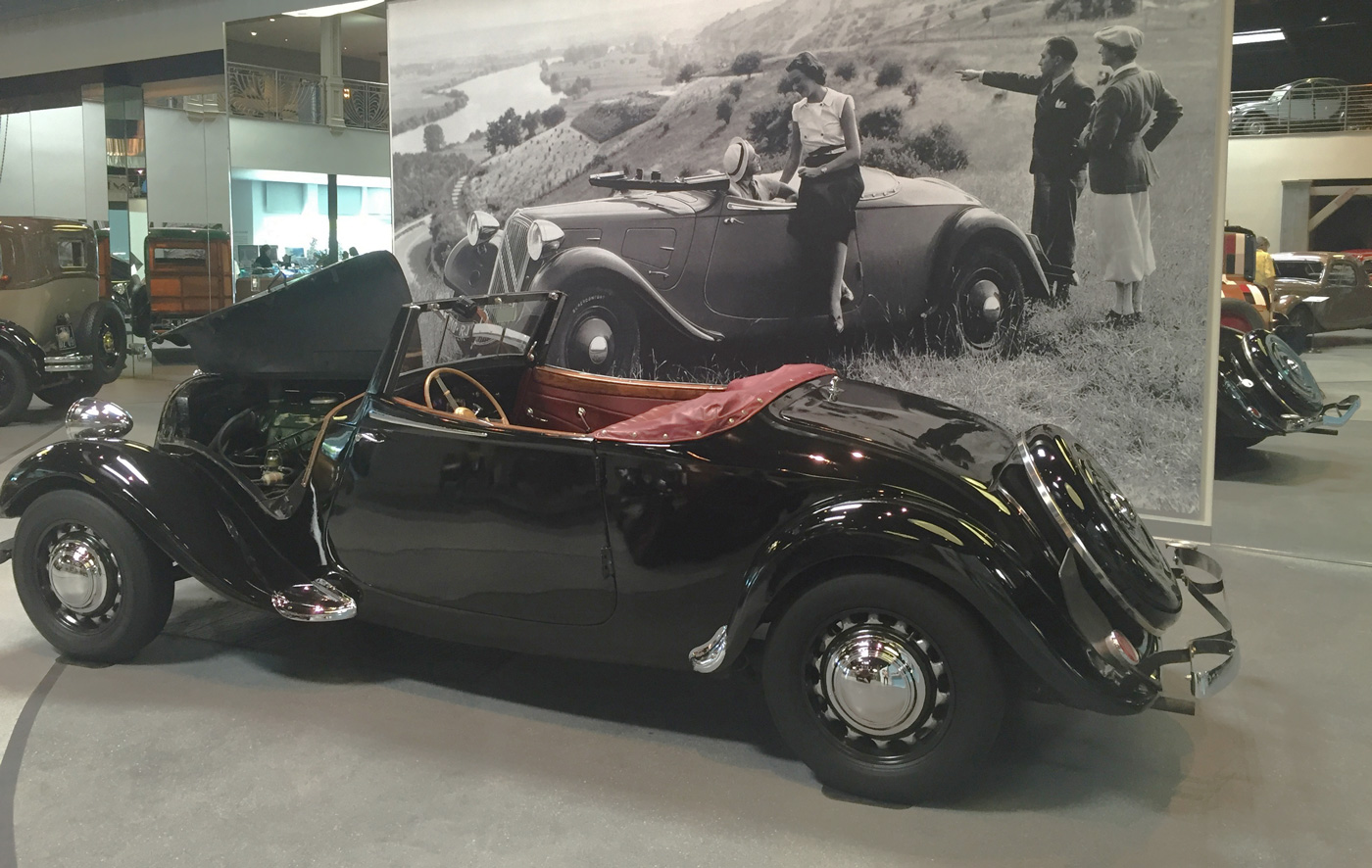
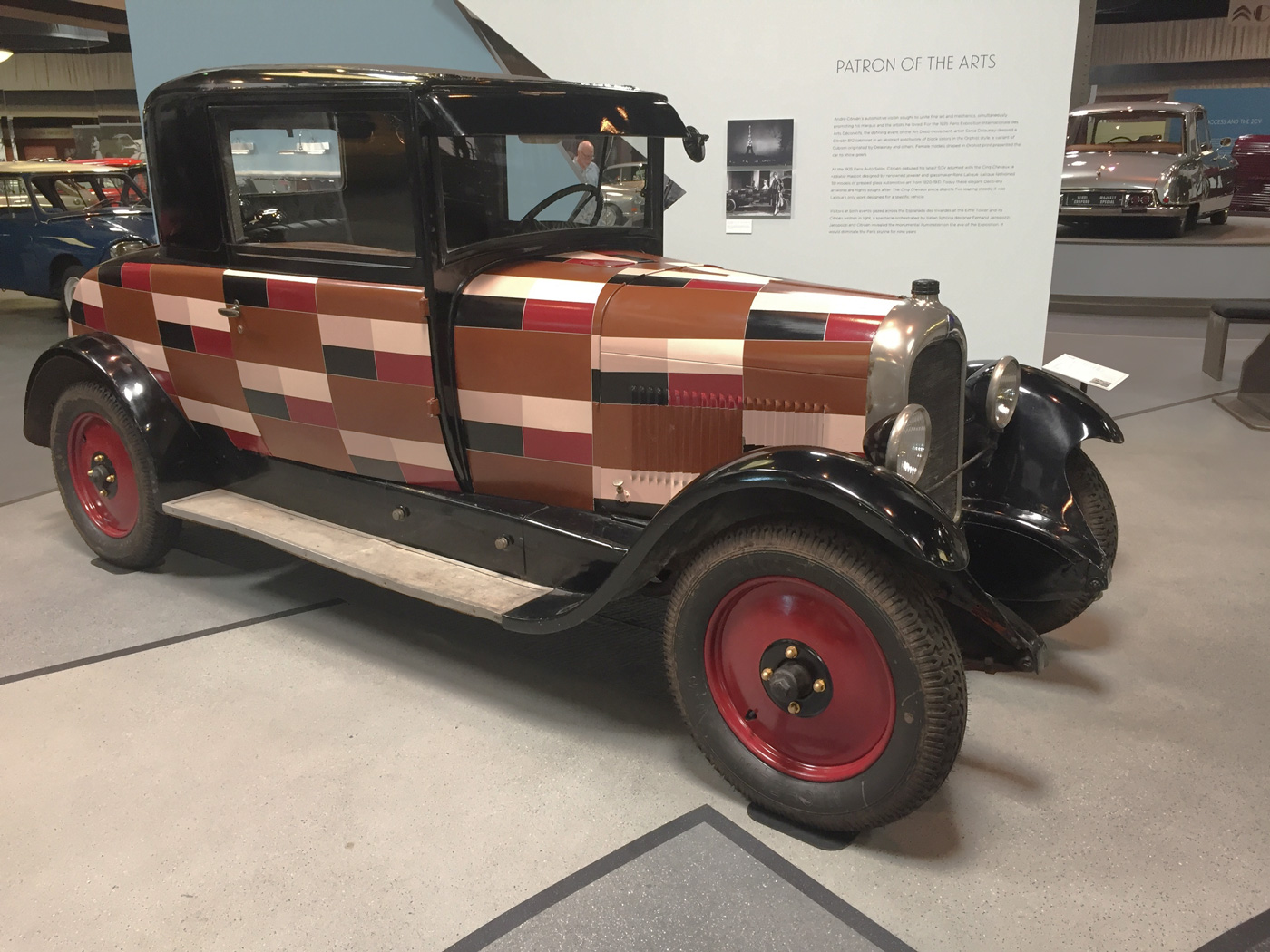
Very nice exhibition…(I’m fan of DS Citroën..)
Bravo! I was totally unaware of the museum. I am a retired USAF pilot who brought back one of the first DS 19’s in 1955. Since that time I have owned DS’s, SM’s, CX’s
XM’s and currently a 2008 C6 diesel along with a 1965 DS which is being restored in Florida. I would love to take a tour of the museum and wonder if anyone may be interested in adding my C6 to the collection. Jalopnik ran a video of my C6 and it can be seen on their website. ” WE drove a Citroen C6 and it exceeded our wildest expectations.
Re the car in the photo captioned “The model C4, with a decidedly American influence” the real story is more mysterious. This is reportedly a B12 Coupe (not a C4) and was restored and painted recently by designer Bernadette Ramaekers for a concours in Holland. Supposedly an hommage to the car designed in similar fashion in the 1920s by Sonia Delaunay which was at various times reported as a Citroën B12, B2 or Caddy Sport. It now appears that the famous checkered Delaunay roadster was in fact not even a Citroën but a Donnet Zedel, but that has not stopped many replicas being made down the years. Either way, nice car. I wish I could get to that exhibition but time is running out (I am in Australia) and anyway, if I try really hard enough I can remember back to my young days in Paris having seen most of these cars on the roads – except for the Chapron Coupes, I only knew of those from my maroon Corgi Toys model. Later, in the ’70s my mother bought an AMI 8 new which was great fun when you got that hang of nailing the gas pedal to the floor and rowing it along on the funny looking gearlever, but it rusted badly and did not last long. Later still I often drove a friends 2CV in London, requiring a similar technique to maintain forward momentum. I am not sure how and where Mr Mullin sourced all of these cars, but considering he must have many contacts in France I wonder why the 2007 C-6 is a UK registered right-hand-drive model?
After many years owning a number of cars of various marques….MG, Lancia, Ferrari, Hillman my first Citroen was a Traction Roadster. This car although a replica produced in Vietnam had all the hallmarks of a beautiful design. My wife thought it so and that got my fevered hands to open up my wallet!! That car has since been sold [ regretfully now!! ] but other models are now parked / stored in our home. 2013 saw the purchase of a Big 15, Big Boot 1954 Traction which we have named Eloise. She is metallic green with original light brown upholstery. A 2007 C5 2.2L twin turbo was the next purchase and this model was a quick car. It was replaced by a 2006 C6 2.7L twin turbo diesel which we consider to be the most luxurious car we have ever owned and likely to be the last. Finally a 1952 RHD 11B was purchased as a ground up restoration….my next 5+ years of retirement activity. Andre Citroen was the most amazing man with a penchant for gathering around him some of the best brains and talent of his time.
Congratulations, Brandes! A truly wonderful piece on a splendid Citroën exhibit, courtesy the great Peter Mullin. Wish I could go and visit… But the refined enthusiasm of your storytelling and the gorgeous photos make me feel I almost did.
I am very grateful.
Citroen, I remember a specific kit for the 6 cylinder traction Avant or the “quinze” as they used to call this model, for racing when I worked for Roland TOUZOT in 1955, there was a kit to modify the gear box, a nose cone that added a 4th gear with an auxiliary cable to engage reverse, that Kit name”REDA” included also a triple Solex carburetors intake maifold
also,cast alloy wheels “jantes Epaf”
fantastic souvenirs!
do not forget the Traction Avant, model 23! yes that car was powered by a Ford flat head
V8 engine, tentative to sell these cars as police cars to the argentinian police
unfortunately it was a bad image to purchase french cars , the deal never was consumed!